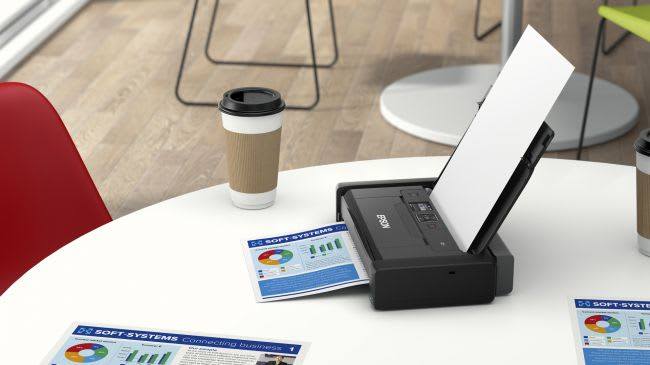Saving on Home Office Printing
Life always changes, and the right decisions to life changes
bring a better life. This has proven true throughout the extraordinary
coronavirus situation where healthcare, grocery, and government entities have
adapted to get results during their heroic work.
Not as heroic – but still an abrupt change – is so many
workers having to adjust to remote work. That’s been a change for millions, and
those who make the right decisions will have a better work-life in their home
office.
Not adopting the right changes in printing can be as
wasteful as unproductive offices whose employees print 10,000 pages per year at
a startling cost of about $725 per person — while burning through three percent
of a company’s revenue on paper alone. Offices who master their printing save
on the budget, increase productivity, and even help the environment.
Don’t worry. You don’t have to be as thorough as offices
that implement printing policies. Simply follow these home printing best
practices, and your home office printer experience and budget will thank you.
WHEN IT COMES TO YOUR PRINTER
If you’re still transitioning to a home office, we advise
getting the best possible printer.
What is the best printer?
The answer is the one that works for your needs. Read our
article How to Find a Quality Printer for acquiring that printer that is the
“quality printer” for your home office.
If you already have a printer (or when you get one), here
are some tips on saving energy and money, as well as general wear-and-tear:
·
Leverage sleep mode or automatic shut off
·
Set your printer to “draft mode”
·
Update firmware as often as possible
WHEN IT COMES TO YOUR ACTUAL PRINTING
A good printer is like a good horse, i.e., quietly rests in
the background and takes you where you need to go as quickly as possible.
Sound printing best practices make your “steed” better. Like
these:
·
Print only in black and white (costs five to
seven times more than color)
·
Reuse printed paper
·
Print on both sides of the paper
·
Save online docs to PDF’s instead of always
printing
·
Print with economic fonts, as the type of font
you use can make a difference in cost (g., Times New Roman, Calibri, and
Century Gothic spend less ink and toner while Arial depletes cartridges at a
faster rate)
Some printer dedicated programs allow you to reduce the
intensity or brightness of documents, which will save on ink and toner.
Be prepared too for printer issues in your home office. If
they happen at work, they’ll happen anywhere in the universe. The most common
printer issue, I’m sure you’ll agree, is paper jams. These mini calamities
mostly happen because of poor paper loading. To avoid paper jams just as you’re
printing something important, please watch our video:
For other printing issues (or optimizations), take a look at
our Printer Self-Help videos.
WHEN IT COMES TO PRINTER CARTRIDGES
Without ink or toner, your printer is not much more than a
place to set your picture frames or stack of contracts. Without quality printer
cartridges, your printer can harm your budget and document quality.
If you’re buying printer cartridges on the internet, we
highly suggest reading our article How to Buy Printer Cartridges Online. From
avoiding counterfeit products to deciding whether to go third-party, these
decisions can make an impact on your printing environment.
Printer cartridge economics can be confounding, as we’ve
shared before with our research:
“If you purchase black ink cartridges three times per year,
the cost will run between $60 and $120 a year depending on brand and size.
Meanwhile, color ink cartridges are more expensive, costing between $75 and
$150 a year based on the same frequency of purchases. When you consider that
these days you can buy a home printer for $50 to $100, the amount you can spend
on ink and toner is frequently more expensive than the initial cost of the
printer.”
The truth is that ink and toner are costly. Drawing again
from our research, printer ink costs around $50 an ounce. Just as startling,
many printer models deliver half or less of valuable ink to a page – mostly
because of maintenance and testing.
Makes you want to save on or at least value these small and
seemingly ordinary objects!
We provide many tips here on keeping your printer cartridges
in good shape. One of our favourite hacks is not changing printer cartridges
when you see the low indicator on a printer. With most printing devices, the
indicator appears when there is approximately 20 percent toner left in the
cartridge tank.
We hope these tips and information help you with your home
office. Who knows if the workforce will ultimately go back to normal one day –
especially if working remotely helps company budgets, public health, and even
the environment (less driving, less office electricity, etc.).
Regardless of what happens, happy printing anywhere you find
yourself. If you need any advice — including getting quality printers or
printer cartridges to your home or business office —please don’t hesitate to
contact us. We are the printer people.
To find out more about Cartridge World, and view our useful articles and resources, visit our website:




Comments
Post a Comment